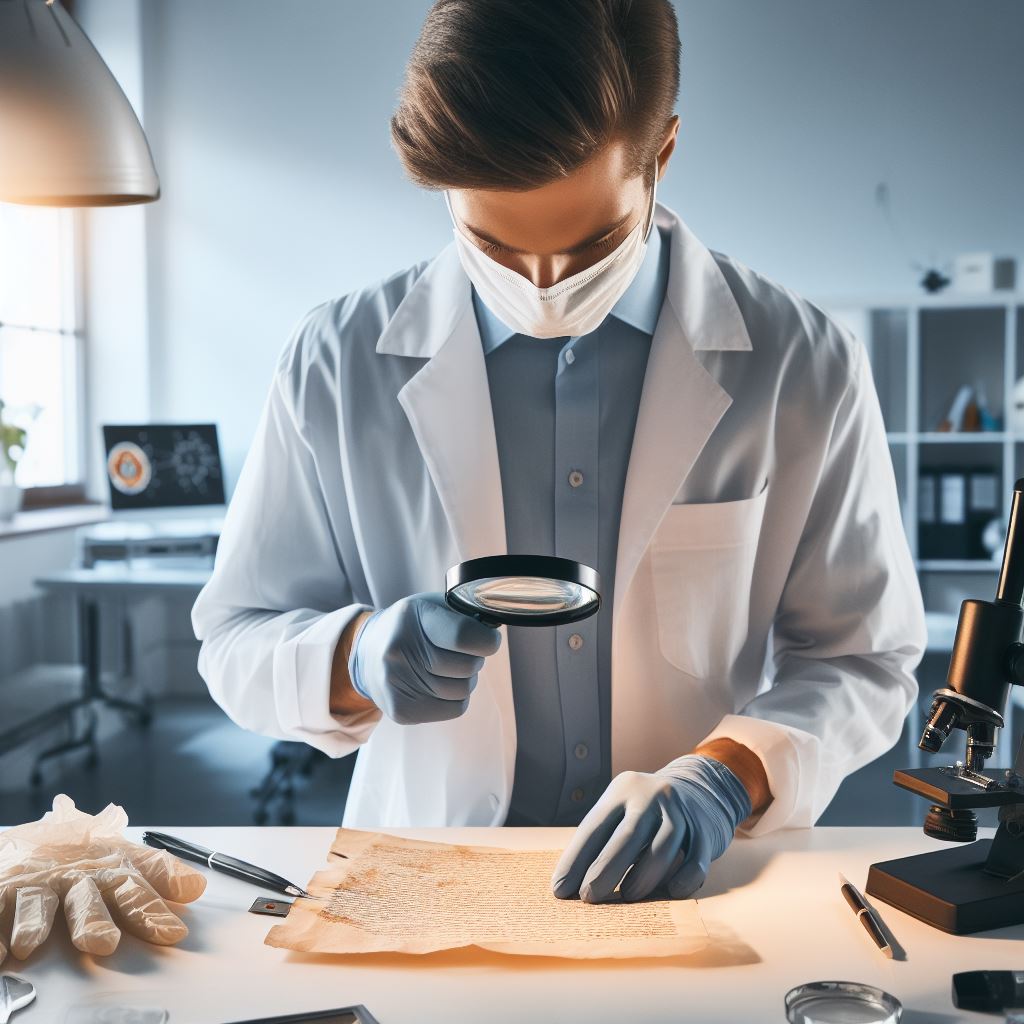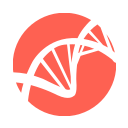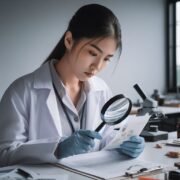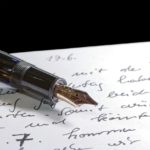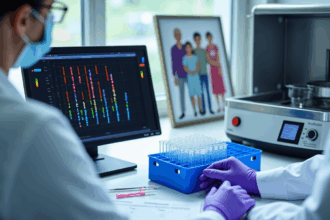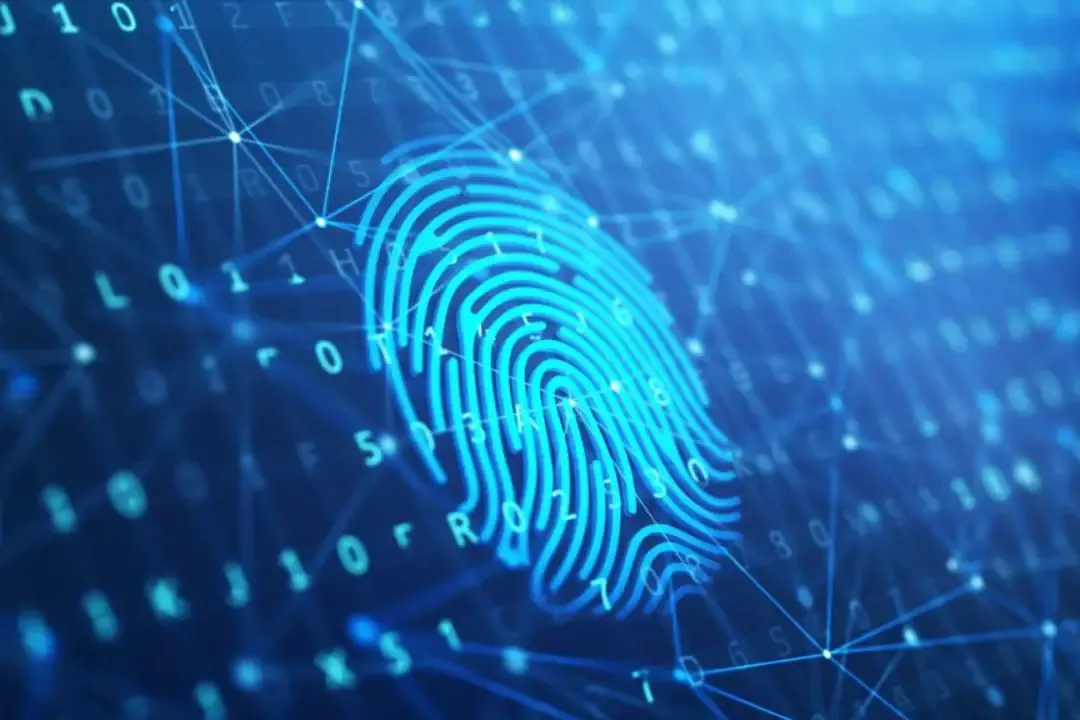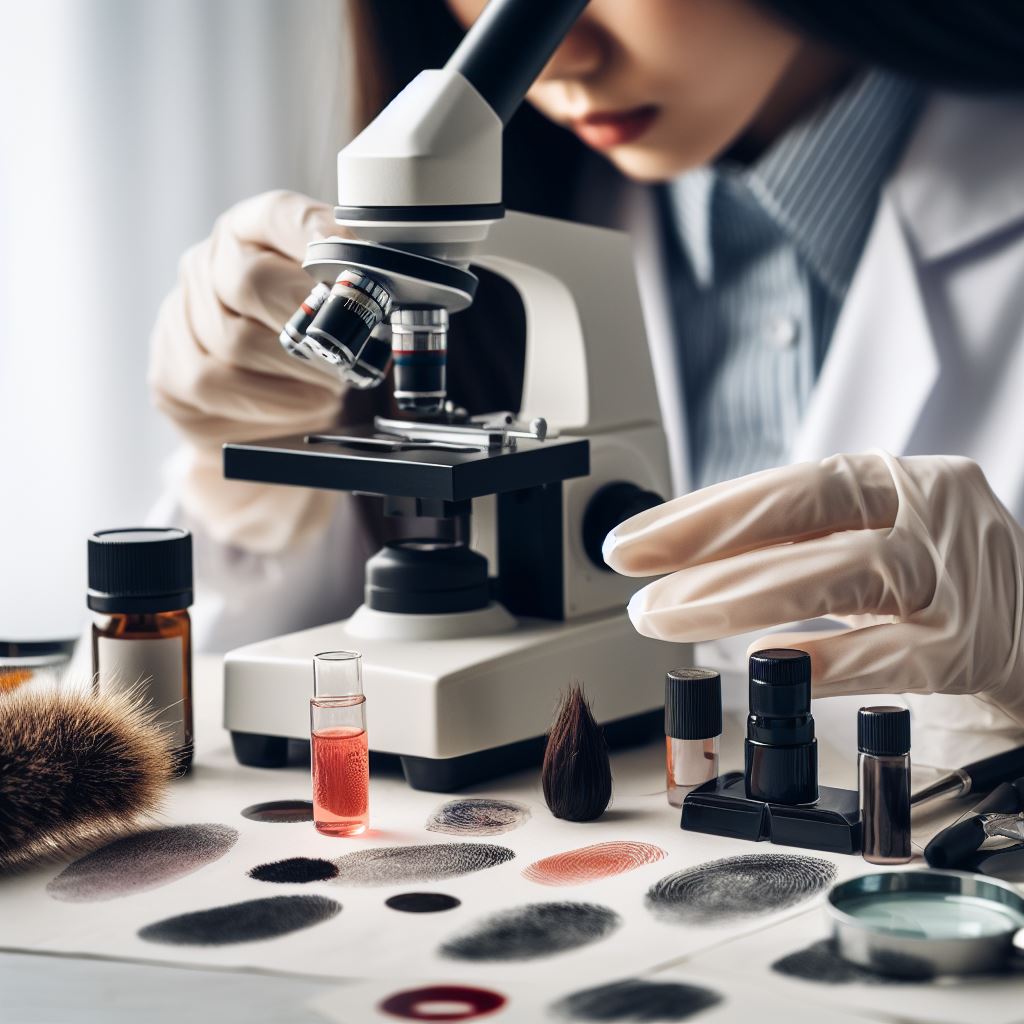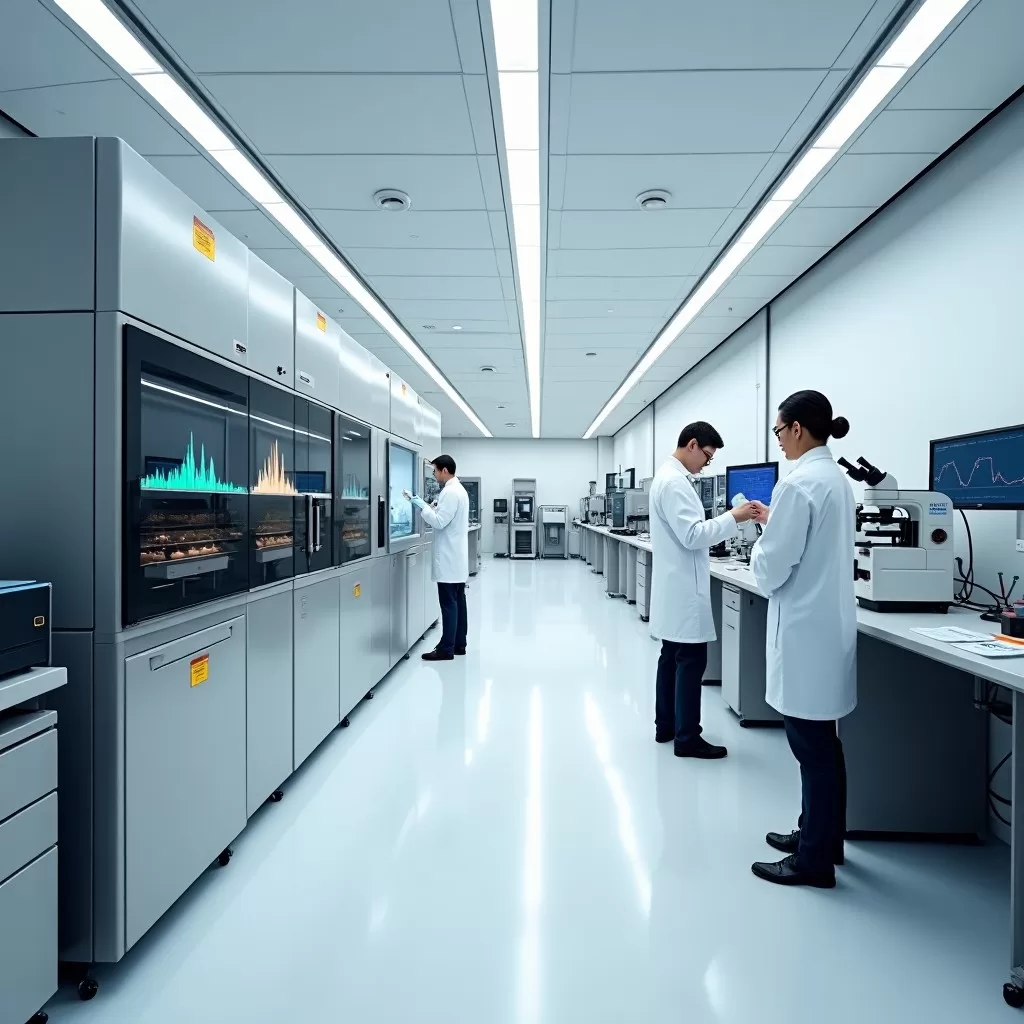Deciphering Authenticity: An Overview
In the realm of forensic analysis, the examination of questioned documents holds paramount significance. This process delves into the intricate world where authenticity and credibility are scrutinized. It aims to uncover the established methodologies employed in document creation and the meticulous techniques utilized to modify or alter their content. The primary objective of this discipline is to shed light on the veracity of documents embroiled in disputes or shrouded in uncertainty.
- Deciphering Authenticity: An Overview
- Unveiling the Spectrum: Types of Questioned Documents
- Methodological Marvels: Techniques and Tools
- Microscopic Marvels
- Illuminating Insights
- Magnification Mastery
- Chemical Conundrums
- Electrostatic Detection Devices (EDD)
- Video Spectral Comparators
- Photographic Documentation
- Computer-Aided Analysis
- Comprehensive Examination: A Multifaceted Approach
- Collaborative Efforts: Multidisciplinary Teamwork
- Ethical Considerations and Professional Standards
- Legal Implications and Courtroom Testimony
- Technological Advancements and Future Perspectives
- Conclusion

Unveiling the Spectrum: Types of Questioned Documents
The scope of questioned documents is vast and diverse, encompassing a wide array of materials that may fall under the discerning gaze of forensic experts. These include, but are not limited to:
- Banknotes, both in circulation and those withdrawn from formal use
- Travel documentation, such as passports and visas
- Postage stamps and lottery tickets
- Identification documents, educational certificates, and employment records
- Financial instruments like checkbooks, deposit slips, tax forms, customs declarations, insurance policies, licenses, and other securities
- Materials integral to document production, including paper, ink, adhesives for ballpoint pens, toner, copy paper, and typewriter ribbons
- Technological tools employed in document creation, such as writing devices, character-printing equipment, duplicating machinery, and printing plates
- Identification cards, contracts, wills, titles, deeds, seals, handwritten communications, machine-generated documents (e.g., from photocopiers, fax machines, and printers), and electronic documents
- Graffiti and digital signatures
The examination of questioned documents extends to encompass a multitude of materials, each with the potential to unravel intricate narratives and shed light on the authenticity of the document in question.
Methodological Marvels: Techniques and Tools
The methodologies and tools employed in examining questioned documents are grounded in well-established principles of physics and chemistry. This multidisciplinary approach ensures a comprehensive and scientifically rigorous analysis, leaving no stone unturned in the pursuit of truth.
Microscopic Marvels
The microscope is a pivotal tool in the forensic document examiner’s arsenal, enabling the observation of evidence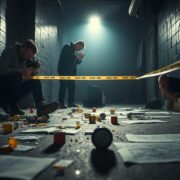 Evidence is any form of proof, such as objects, materials, or scientific findings, presented to establish or disprove a fact in a legal proceeding. It is used to reconstruct events and link or exclude individuals Read Full Definition that might otherwise remain concealed and overlooked. Through its magnifying capabilities, microscopes unveil minute details, patterns, and anomalies that can prove instrumental in unraveling a document’s authenticity.
Evidence is any form of proof, such as objects, materials, or scientific findings, presented to establish or disprove a fact in a legal proceeding. It is used to reconstruct events and link or exclude individuals Read Full Definition that might otherwise remain concealed and overlooked. Through its magnifying capabilities, microscopes unveil minute details, patterns, and anomalies that can prove instrumental in unraveling a document’s authenticity.
Illuminating Insights
Light sources play a crucial role in the examination process, with transmitted light, infrared light, and ultraviolet light being employed to reveal hidden characteristics and irregularities. These specialized illumination techniques can uncover alterations, erasures, or other modifications that may have been intentionally obscured.
Magnification Mastery
Beyond microscopes, magnifiers and linen testers are indispensable tools that enable forensic experts to scrutinize documents at varying degrees of magnification, unveiling intricate details and patterns that may hold the key to unlocking the truth.
Chemical Conundrums
Analytical chemical techniques, such as thin-layer chromatography, offer invaluable insights into the composition and properties of inks, papers, and other materials used in document creation. These analyses can reveal crucial information about the document’s origin, age, and potential tampering.
Electrostatic Detection Devices (EDD)
Electrostatic detection devices (EDD), also known as ESDA (Electrostatic Detection Apparatus), are specialized tools that harness the principles of electrostatics to detect and visualize indented writing or impressions on documents. These devices are particularly valuable in uncovering alterations, erasures, or overwritten text, providing forensic experts with a comprehensive understanding of the document’s history.
Video Spectral Comparators
Video spectral comparators are advanced imaging systems that facilitate comparing and analyzing questioned documents with known reference materials. By capturing high-resolution images and enabling side-by-side comparisons, these tools aid in the identification of similarities or discrepancies in handwriting, printing, or other document features.
Photographic Documentation
Photographic documentation is pivotal in the examination process, capturing and preserving evidence for future reference and analysis. Specialized equipment, such as 35mm SLR cameras, digital cameras, copy stands, filters, extension tubes, and lenses, are employed to ensure accurate and detailed documentation of the questioned documents.
Computer-Aided Analysis
In the modern era, specialized computer software has become an indispensable tool in the examination of questioned documents. These programs facilitate advanced image analysis, handwriting comparison, and data Information in analog or digital form that can be transmitted or processed. Read Full Definition processing, streamlining the examination process and enhancing the accuracyIn scientific and measurement contexts, "accuracy" refers to the degree of proximity or closeness between a measured value and the true or actual value of the measured quantity. Accuracy indicates how well a measurement reflects Read Full Definition and efficiency of forensic analyses.
Information in analog or digital form that can be transmitted or processed. Read Full Definition processing, streamlining the examination process and enhancing the accuracyIn scientific and measurement contexts, "accuracy" refers to the degree of proximity or closeness between a measured value and the true or actual value of the measured quantity. Accuracy indicates how well a measurement reflects Read Full Definition and efficiency of forensic analyses.
Comprehensive Examination: A Multifaceted Approach
Examining questioned documents is a multifaceted endeavor encompassing a comprehensive range of techniques and methodologies. Preliminary analyses often commence with an evaluation of the document’s physical characteristics, such as color, thickness, weight, weave pattern, and fiber composition. These initial assessments lay the foundation for more in-depth investigations.
Subsequent examinations may involve the study of ultraviolet (UV) properties, enabling the detection of security features, watermarks, or other concealed elements. Instrumental techniques, such as spectroscopy and chromatography, provide invaluable insights into the chemical composition of inks, papers, and other materials, aiding in the identification of their origins and potential tampering.
Handwriting analysis is another crucial aspect of questioned document examination, involving the meticulous comparison of handwriting samples to identify authorship, detect forgeries, or uncover alterations. This process often consists of the use of specialized software and databases, enabling forensic experts to analyze and compare handwriting characteristics with a high degree of precision.
In addition to handwriting analysis, examining machine-generated documents, such as those produced by printers, photocopiers, or fax machines, is equally important. These analyses involve the evaluation of printing patterns, toner distribution, and other unique characteristics that can aid in identifying the specific device used in the document’s creation.
Collaborative Efforts: Multidisciplinary Teamwork
The examination of questioned documents is a collaborative endeavor, often requiring the expertise of professionals from various disciplines. Forensic document examiners may work in tandem with chemists, physicists, and materials scientists to conduct comprehensive analyses and interpret the findings accurately.
Furthermore, close collaboration with law enforcement agencies, legal professionals, and other stakeholders is essential to ensure that the examination process adheres to established protocols and legal requirements. This multidisciplinary approach fosters a holistic understanding of the questioned document and its context, enhancing the accuracy and reliability of the examination results.
Ethical Considerations and Professional Standards
Integrity and ethical conduct are paramount in the field of questioned document examination. Forensic experts must adhere to strict professional standards and ethical guidelines to maintain the credibility and impartiality of their analyses. This includes adhering to established protocols, maintaining meticulous documentation, and ensuring the preservation of evidence integrity.
Furthermore, forensic document examiners must remain objective and unbiased throughout the examination process and present their findings and conclusions impartially. Continuous education, training, and adherence to best practices are essential to upholding the highest standards of professionalism and ensuring the reliability of the examination results.
Legal Implications and Courtroom Testimony
The findings and conclusions from examining questioned documents often hold significant legal implications. Forensic document examiners may be called upon to provide expert testimony in courtroom settings, presenting their analyses and interpretations to judges, juries, and legal professionals.
In such instances, clear and effective communication is crucial, as forensic experts must articulate their methodologies, findings, and conclusions in a manner that is comprehensible to non-specialists. The ability to convey complex technical information in a concise and understandable manner is paramount, ensuring that the evidence presented is accurately interpreted and given due consideration in legal proceedings.
Technological Advancements and Future Perspectives
The field of questioned document examination is continuously evolving, driven by technological advancements and ongoing research. The integration of cutting-edge technologies, such as artificial intelligence (AI), machine learning, and advanced imaging techniques, holds immense potential for enhancing the accuracy and efficiency of forensic analyses.
AI and machine learning algorithms can be trained to recognize patterns, identify anomalies, and assist in the comparison and analysis of handwriting samples, printing patterns, and other document features. Advanced imaging techniques, including hyperspectral imaging and 3D scanning, offer new avenues for exploring the intricate details and characteristics of questioned documents.
Furthermore, the development of portable and non-destructive examination tools is a key area of focus, enabling on-site analyses and minimizing the need for extensive sample preparation or transportation. These advancements not only streamline the examination process but also contribute to the preservation of valuable evidence.
As technology continues to advance, the field of questioned document examination will undoubtedly embrace these innovations, expanding the frontiers of forensic analysis and further enhancing the ability to unravel the mysteries surrounding document authenticity.
Conclusion
The examination of questioned documents is a multifaceted and intricate endeavor, demanding a synergy of scientific rigor, technical expertise, and ethical integrity. From deciphering the authenticity of banknotes to unraveling the mysteries of handwritten communications, this discipline plays a pivotal role in upholding the credibility and reliability of documents across various domains.
Through the meticulous application of advanced techniques and specialized tools, forensic experts navigate the intricate web of evidence, uncovering hidden truths and shedding light on the intricate narratives woven within questioned documents. As technology continues to evolve, the field of questioned document examination stands poised to embrace innovations, further enhancing its capacityThe amount of finished product that could be produced, either in one batch or over a defined period of time, and given a set list of variables. Read Full Definition to unravel the complexities of document authenticationVerifying the identity of a user, process, or device, often as a prerequisite to allowing access to resources in an information system. Read Full Definition.
Ultimately, examining questioned documents serves as a guardian of truth, safeguarding the integrity of documents and ensuring that justice is served through the unwavering pursuit of factual evidence. It is a discipline that demands steadfast dedication, meticulous attention to detail, and an unyielding commitment to uncovering the truth, no matter how obscure or elusive.



